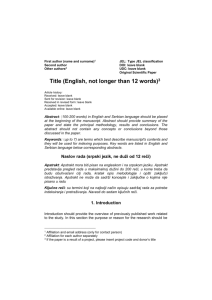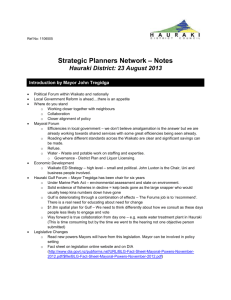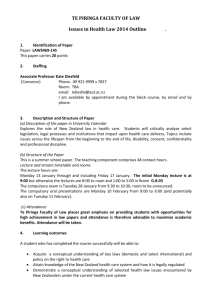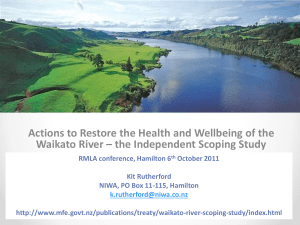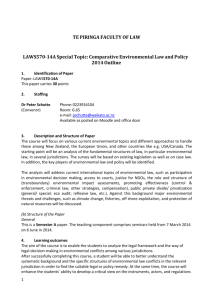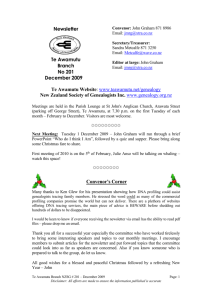Hamilton, Home of IFAJ Congress 2015
advertisement
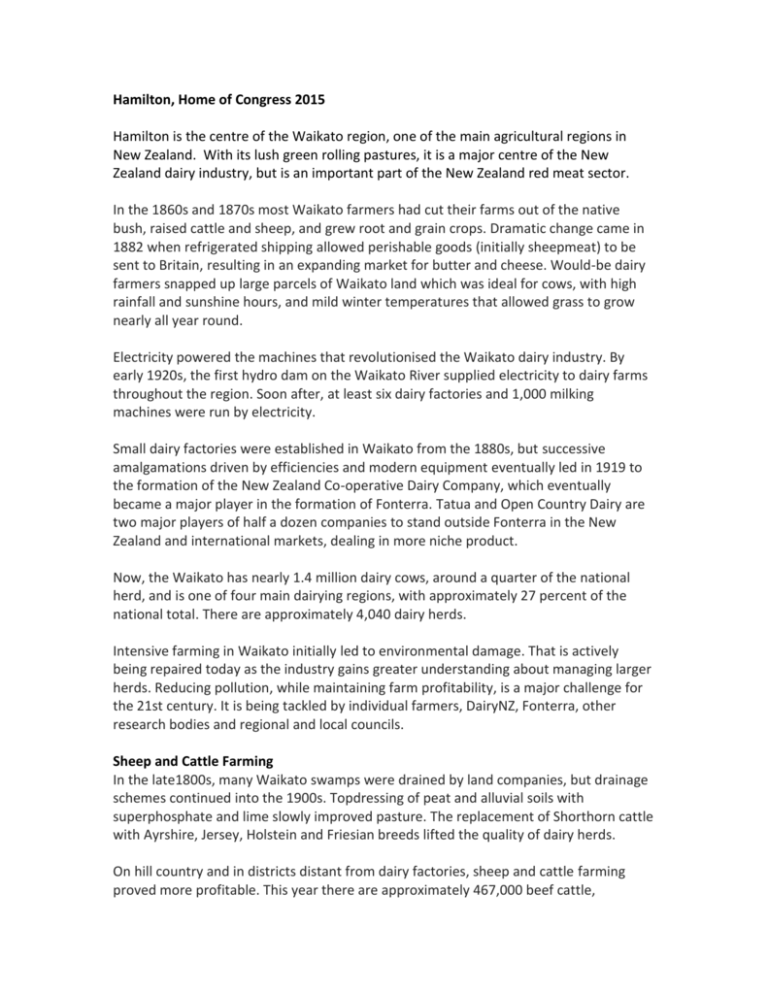
Hamilton, Home of Congress 2015 Hamilton is the centre of the Waikato region, one of the main agricultural regions in New Zealand. With its lush green rolling pastures, it is a major centre of the New Zealand dairy industry, but is an important part of the New Zealand red meat sector. In the 1860s and 1870s most Waikato farmers had cut their farms out of the native bush, raised cattle and sheep, and grew root and grain crops. Dramatic change came in 1882 when refrigerated shipping allowed perishable goods (initially sheepmeat) to be sent to Britain, resulting in an expanding market for butter and cheese. Would-be dairy farmers snapped up large parcels of Waikato land which was ideal for cows, with high rainfall and sunshine hours, and mild winter temperatures that allowed grass to grow nearly all year round. Electricity powered the machines that revolutionised the Waikato dairy industry. By early 1920s, the first hydro dam on the Waikato River supplied electricity to dairy farms throughout the region. Soon after, at least six dairy factories and 1,000 milking machines were run by electricity. Small dairy factories were established in Waikato from the 1880s, but successive amalgamations driven by efficiencies and modern equipment eventually led in 1919 to the formation of the New Zealand Co-operative Dairy Company, which eventually became a major player in the formation of Fonterra. Tatua and Open Country Dairy are two major players of half a dozen companies to stand outside Fonterra in the New Zealand and international markets, dealing in more niche product. Now, the Waikato has nearly 1.4 million dairy cows, around a quarter of the national herd, and is one of four main dairying regions, with approximately 27 percent of the national total. There are approximately 4,040 dairy herds. Intensive farming in Waikato initially led to environmental damage. That is actively being repaired today as the industry gains greater understanding about managing larger herds. Reducing pollution, while maintaining farm profitability, is a major challenge for the 21st century. It is being tackled by individual farmers, DairyNZ, Fonterra, other research bodies and regional and local councils. Sheep and Cattle Farming In the late1800s, many Waikato swamps were drained by land companies, but drainage schemes continued into the 1900s. Topdressing of peat and alluvial soils with superphosphate and lime slowly improved pasture. The replacement of Shorthorn cattle with Ayrshire, Jersey, Holstein and Friesian breeds lifted the quality of dairy herds. On hill country and in districts distant from dairy factories, sheep and cattle farming proved more profitable. This year there are approximately 467,000 beef cattle, approximately 13 percent of the national total; approximately 1,754,000 sheep, totaling six percent of the national total; and 84,000 deer, approximately 8.8 percent of the national total. Goat and pig farming are also significant. Equestrian and thorough-bred Houses From the 1950s, Waikato thoroughbred horse studs, particularly those located between Hamilton and Cambridge, established a reputation for breeding champions. The notable staying power of these horses was attributed to high-quality Waikato pastures. Famous stud stallion Sir Tristram and double Olympic equestrian event winner Charisma both came from Waikato studs. Viticulture Waikato has been a wine-growing region since 1901, when vineyards were established near Te Kauwhata. Vilagrad Wines at Ohaupo started in 1906 and is the oldest surviving winery in the region, still owned by the same family, with the fifth generation now very involved in the vineyard, wine-making, and restaurant. Horticulture and crops Asparagus, onions, blueberries, potatoes and melons are the main horticultural crops in the region. Stone fruit, notably nectarines and peaches, and pipfruit, especially apples and pears, have also been important crops. The region also became known for growing maize to provide stock food, over a quarter of the total New Zealand crop.


